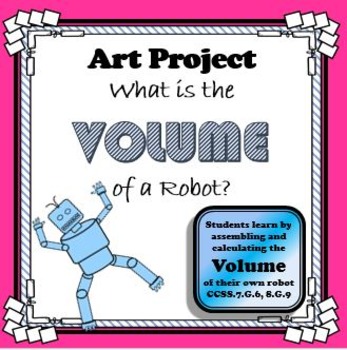What is the Volume of a Robot Art Project Activity...This is AWESOME Practice!!
My Favorite Number
63 Followers
Grade Levels
6th - 9th, Homeschool
Subjects
Resource Type
Standards
CCSS7.G.B.6
CCSS8.G.C.9
Formats Included
- PDF
Pages
12 pages
My Favorite Number
63 Followers
Description
This product is aligned with ccss.7.G.6 and 8.G.9 material, focusing on finding the volume of a robot created by each student. Given are a wide range of number for them to pick from when assigning the dimensions of each shape including decimals and fractions. Students will get practice finding volume of rectangular and triangular prisms and pyramids, cylinders, cones and spheres. When all the measurements are computed students will be able to add up the volume of all their shapes. In addition to 7th grade geometry, this product is also useful for advanced 6th grade geometry and review in 6th grade through 8th grade geometry. This art activity has 12 pages including cover, teacher notes, examples, student instructions, Number Gallery, Calculation Page, My Robot page and 4 sheets of shapes. All pages can be printed in color OR use the grayscale/black and white selection on your printing preferences page to print without color.
This product is a creation of My Favorite Number. Copyright 2016 MyFavoriteNumber
This product is a creation of My Favorite Number. Copyright 2016 MyFavoriteNumber
Total Pages
12 pages
Answer Key
N/A
Teaching Duration
90 minutes
Report this resource to TPT
Reported resources will be reviewed by our team. Report this resource to let us know if this resource violates TPT’s content guidelines.
Standards
to see state-specific standards (only available in the US).
CCSS7.G.B.6
Solve real-world and mathematical problems involving area, volume and surface area of two- and three-dimensional objects composed of triangles, quadrilaterals, polygons, cubes, and right prisms.
CCSS8.G.C.9
Know the formulas for the volumes of cones, cylinders, and spheres and use them to solve real-world and mathematical problems.





